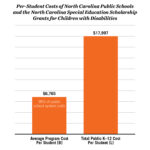I remember standing in front of my high school English class, a nervous seventeen-year-old, trying to explain Shakespeare to a room full of equally nervous fifteen-year-olds. It was a mock teaching exercise, part of a career day, and something just clicked for me in that moment. The feeling of seeing a light bulb go off in someone’s eyes, the small nod of understanding, the quiet question that showed true engagement – it was electrifying. That day, I knew I wanted to be a teacher. But as with many dreams, there was a big, looming question mark: how was I going to pay for it? My family wasn’t wealthy, and the thought of student loans felt like a heavy weight before I’d even started. That’s when I first heard about teaching scholarships, and let me tell you, finding them and earning them turned out to be as much of a learning experience as college itself.
It felt like a hidden secret at first, this idea of someone else paying for my education because I wanted to teach. I used to think scholarships were only for the super-geniuses, the athletic stars, or the kids with perfect grades who also cured diseases in their spare time. But as I started digging, I realized that wasn’t the whole picture. Teaching scholarships are special; they’re investments in the future, a way for communities, organizations, and even the government to say, “We believe in good teachers, and we’re willing to help you become one.” They’re not just free money; they come with an understanding that you’re committing to a profession that shapes lives. And for someone like me, who just wanted to make a difference in a classroom, that understanding felt like a warm embrace.
My search began in a pretty ordinary place: my high school guidance counselor’s office. She had a pile of pamphlets and a few websites bookmarked. It was overwhelming at first, like trying to find a specific grain of sand on a very large beach. But she told me something simple that stuck with me: "Start local." She suggested looking at community foundations, local parent-teacher associations, and even smaller, regional colleges. And she was right. My very first application was for a scholarship from a local rotary club, open to students from my county who planned to enter public service, including teaching. I remember spending hours on the essay, writing about that day in the English class, pouring my heart out about why I believed teaching was more than just a job. I didn’t get that one, but it taught me a lot about putting myself out there, about articulating my passion. It was the first step on a long, fruitful path.
The world of teaching scholarships is much broader than I initially imagined. There are scholarships for almost every angle of the teaching profession you can think of. For instance, some are based purely on financial need, meaning they look at your family’s income and assets to determine if you truly need the money to attend college. These were a big focus for me. I filled out the FAFSA, the Free Application for Federal Student Aid, religiously every year. It’s the gateway to federal grants and many need-based scholarships from colleges themselves. Don’t ever skip this step, even if you think you won’t qualify. You never know what might open up.
Then there are merit-based scholarships. These often look at your academic record – your grades, your test scores, maybe even your extracurricular activities. While my grades were good, I wasn’t a straight-A student in every subject, so I focused on showing how my enthusiasm for learning and my commitment to helping others translated into my academic efforts. I made sure to highlight my volunteer work tutoring younger students and my involvement in school clubs that had an educational bent. It wasn’t just about the numbers; it was about showing my potential as a future educator.
A significant chunk of scholarships also target specific subject areas or teaching fields. This was a game-changer for me. I loved English, but I also had a knack for history. I discovered there were scholarships specifically for people who wanted to teach in subjects where there’s a high demand for teachers. Think about math, science, special education, or foreign languages. These are often called "high-need" areas, and the government and private organizations often offer generous funding to encourage students to go into these fields. For example, the TEACH Grant program, a federal initiative, provides money to students who agree to teach for a certain number of years in a high-need field in a low-income school. It’s a commitment, yes, but it’s also a powerful way to get significant financial help while pursuing your dream. I considered specializing in special education for a while, just because I saw so many scholarships tied to it, but ultimately, my heart pulled me back to the humanities. However, knowing those options exist can help you make informed decisions about your teaching path.
Some scholarships are tied to specific locations or service commitments. This is another big one, especially if you’re open to teaching in rural areas or schools that serve communities with fewer resources. Many states have programs designed to attract teachers to these areas. You might receive funding for your education in exchange for agreeing to teach in a designated school for a few years after graduation. It’s a win-win: you get your education paid for, and a school gets a dedicated teacher. It requires thinking ahead, but it’s a tangible way to make your dreams affordable. I knew a friend who got nearly all her tuition covered by agreeing to teach in a small town for three years. She loved it, and it launched her career without the burden of student loan debt.
You’ll also find scholarships that aim to promote diversity in the teaching profession. These are often for students from underrepresented backgrounds or minority groups. Representation in education is incredibly important, and many organizations recognize this and provide funding to help build a teaching force that reflects the diverse student population. Don’t overlook these; they are vital for strengthening our schools.
Beyond these broad categories, there are countless scholarships offered by individual colleges and universities themselves. When you apply to a school, you’re often automatically considered for some of their general scholarships. But it’s always a good idea to dig deeper into their education department’s website. They often have specific scholarships just for aspiring teachers, sometimes even tied to specific grade levels or subject endorsements. My university, for instance, had a scholarship named after a beloved former education professor, specifically for students demonstrating leadership potential in their teaching coursework. I applied for that one in my junior year and was thrilled to receive it. It wasn’t a huge amount, but every little bit helped.
Professional organizations are another fantastic resource. Groups like the National Education Association (NEA) or state-level teacher associations often have scholarship programs for their members or their children, and sometimes for anyone pursuing a teaching degree. It’s worth checking out organizations related to your specific teaching interest too – for example, if you want to teach science, look into science education associations. They often want to foster new talent in their fields.
The application process itself can feel like a marathon, but it’s a marathon with a finish line that offers a huge reward. Here’s what I learned along the way:
1. Start Early and Be Organized: This is probably the most important piece of advice I can give. Scholarship deadlines often fall months before college application deadlines. Create a spreadsheet or a simple notebook to keep track of each scholarship: its name, the organization offering it, the deadline, what materials are needed (essay, recommendation letters, transcripts), and the status of your application. This kept me sane.
2. Read the Instructions Carefully: This sounds obvious, right? But you’d be surprised how many applications get tossed because someone missed a small detail. If they ask for a 500-word essay, don’t send a 1000-word one. If they want two recommendation letters, don’t send three or one. Pay attention to every single requirement.
3. Craft a Compelling Story in Your Essay: This is where you get to shine. Scholarships aren’t just about your grades; they’re about you and your potential. Why do you want to teach? What kind of teacher do you want to be? What experiences have shaped your desire to enter the classroom? Don’t be afraid to be personal and authentic. I talked about my own struggles with learning in certain subjects and how a patient teacher made all the difference. I talked about wanting to be that difference for someone else. Proofread relentlessly, and then ask someone else to proofread it too. A fresh pair of eyes can catch mistakes you’ve stared right through.
4. Choose Your Recommenders Wisely: When a scholarship asks for recommendation letters, pick people who know you well and can speak genuinely about your character, work ethic, and potential as a teacher. This usually means teachers, counselors, or supervisors from volunteer work or part-time jobs. Don’t just ask them for a letter; talk to them about the scholarship, what it means to you, and what aspects of your abilities you’d like them to highlight. Provide them with your resume and a copy of your essay so they can tailor their letter to your application. And give them plenty of time – don’t ask them the week before the deadline!
5. Prepare for Interviews (If Required): Some scholarships, especially the more competitive ones, might include an interview. This is your chance to connect with the scholarship committee in person. Practice answering common interview questions, like "Why do you want to be a teacher?" or "What are your strengths and weaknesses?" Be yourself, be enthusiastic, and be prepared to talk about your vision for your future classroom. I found it helpful to research the organization offering the scholarship beforehand so I could speak to their values and mission.
Beyond traditional scholarships, there are a couple of other financial avenues that aspiring teachers should absolutely be aware of. One of the biggest is student loan forgiveness programs. Many states and the federal government offer programs where if you teach in certain high-need schools or subject areas for a set number of years, a portion of your student loans can be forgiven. The Public Service Loan Forgiveness (PSLF) program is a big one for anyone working in public education. It requires ten years of qualifying payments while working for a qualifying employer (like a public school), and then your remaining federal student loan balance is forgiven. It’s a long-term commitment, but it’s a powerful incentive that can make a huge difference in your financial life.
Another thing to remember is that you might also qualify for grants. Grants are like scholarships in that they don’t have to be paid back, but they are often purely based on financial need, or sometimes tied to specific academic programs or research projects. The Pell Grant is a common federal grant for undergraduate students with financial need. Always look into these alongside scholarships.
I also learned that it’s okay to have a part-time job while studying. While scholarships eased a lot of the burden, I still worked a few hours a week at the campus library. It helped cover my living expenses and gave me a sense of independence. Balancing work and studies teaches you time management skills that are invaluable for teaching.
Looking back, there were definitely moments of frustration. I received plenty of rejection letters. Each one stung a little, making me wonder if I was truly cut out for this. But my guidance counselor, and later my college advisors, always reminded me that every "no" just brought me closer to a "yes." They also reminded me that scholarships aren’t a judgment of your worth, but a competitive process where many worthy candidates apply. The key is persistence. Don’t give up after the first few tries. There are so many scholarships out there, and each one has different criteria.
Some common mistakes I saw people make, and almost made myself, included:
- Believing they weren’t "good enough": Many students count themselves out before even trying. You don’t have to be perfect; you just have to show potential and passion.
- Not reading the instructions: As I mentioned, this is a killer. A great essay won’t matter if it’s sent to the wrong address or misses a key requirement.
- Missing deadlines: Scholarship deadlines are firm. Mark them on your calendar, set reminders, and aim to submit a few days early, just in case of technical glitches.
- Submitting generic applications: Don’t use the same essay for every scholarship. Tailor each application to the specific organization and their mission. Show them you’ve done your homework.
- Failing to follow up: A polite thank-you note after an interview or even after receiving a rejection can leave a positive impression. You never know when paths might cross again.
The truth is, teaching is a demanding profession, but it is also one of the most rewarding. Knowing that I pursued my dream without accumulating a mountain of debt allowed me to enter the classroom with a clearer head and a lighter heart. It meant I could focus on my students, on learning and growing as an educator, rather than constantly worrying about loan payments.
If you’re an aspiring teacher, or if you know someone who dreams of stepping into a classroom, please know that financial help is out there. It might take some searching, some writing, and a good dose of perseverance, but it’s absolutely worth it. Don’t let the cost of education deter you from a calling that can change the world, one student at a time. My journey from a nervous high school student to a confident teacher, all made possible by the generosity of teaching scholarships, is proof that with a little effort and a lot of heart, your path to the classroom can be cleared. So, take that first step, start digging, and believe in the power of your dream. The world needs good teachers, and there are people ready to help you become one.



